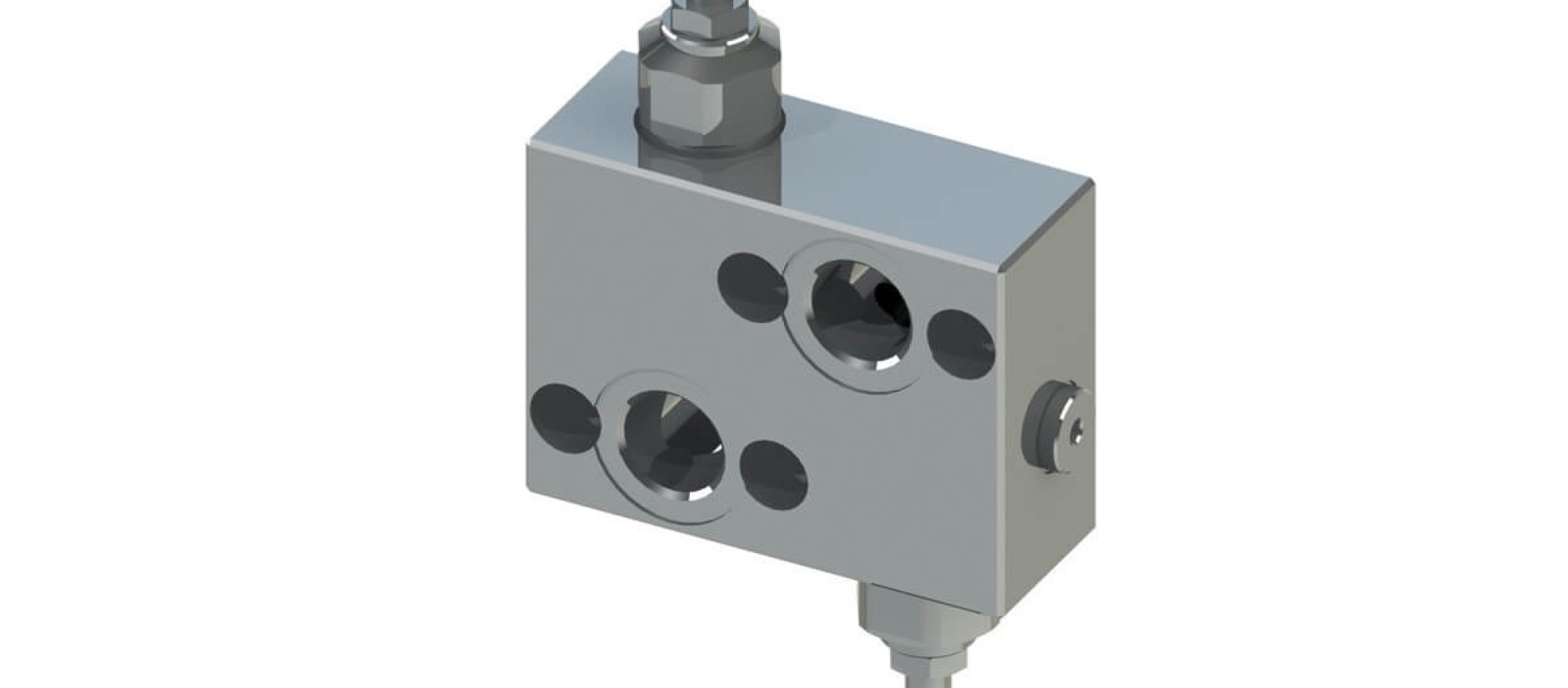

A pressure relief valve is a hydraulic component designed to limit pressure in one or more locations of a hydraulic system. A pressure relief valve, also known as a relief valve, is constructed with a ball, poppet or spool against a spring and installed into a cavity or ported body.
Every hydraulic system and circuit requires a pressure relief valve to act as either the primary or secondary safety protection device. These valves play an important part in stopping the pressure from getting too high if something in the circuit fails. Without this protection, pressure could build up and could cause costly, irreparable damage or even physical harm to people near the hydraulic system.
Hydraulic systems require a power source to operate, such as electric motor or diesel engine. However, a pressure relief valve must be capable of operating at all times, even during a period of power failure. Therefore, the sole source of power for the pressure relief valve is the hydraulic fluid. Reliability is also vital to the prevention of catastrophic failure, so the design of a relief valve is kept as simple and concise as possible.
As soon as a condition occurs that causes the pressure in a hydraulic system to equal that of the relief valve setting it allows oil to pass through it to the reservoir. The pressure relief valve opens at a predetermined set pressure, however, if the downstream pressure is acting on top of the valve poppet then the actual pressure at which the relief valve opens increases. This is why multi-stage relief valves often have external pilot drains to ensure the pressure is level and stable.
Relief valves are not all the same, but each relief valve comprises of essentially three functional elements:
Typically, a pressure relief valve uses a spring loaded “poppet” as the valve element. A poppet is a cone shaped object that sits within an oppositely machined seat. When the pressure exerts a greater force on the spring to which it is loaded, the poppet moves away from the seat and allows fluid to pass through to the outlet port.
When high flows are required 2 stage relief valves are the optimal choice. The 2 stage design uses a small pilot relief that essentially shifts and in turn allows a large poppet to release oil from the high pressure side to the low.
Typically a mechanical spring, the reference force element exerts a force on the sensing element which closes the valve. The reference spring can often be adjusted by the operator to change the relief pressure set point.
As we have noted previously, relief valves are installed to limit the pressure in an entire hydraulic system by diverting pressurised flow to the reservoir. Without controlling or limiting these pressurised forces, the fluid components and equipment could be damaged. Damage to hydraulic systems can be extremely costly in failed components and system down time. Hydraulic system failure through too much pressure could also have the potential to be physically dangerous to those nearby.
Hydraulic relief valves avoid these hazards.
It is critical that relief valves are designed with the correct materials compatible with many different types of process fluid. There are three types of pressure relief valve currently used in a typical circuit.
A spring loaded relief valve comprises a valve mounted in the hydraulic system, a poppet held against the valve to prevent the valve from lifting under normal operating conditions, a spring to keep the poppet closed and a body (“manifold”) to contain the operating elements.
The piston area vented to the atmosphere is exactly equal to the piston area exposed to the backpressure. The poppet is vented to ensure that the pressure area will always be exposed to the atmospheric pressure. This provides protection and minimises the effects of excessive pressure drop.
These pressure relief valves comprise the main valve with a piston or a disk operated by a diaphragm and a pilot. When the predetermined pressure point has been reached the pilot actuates to close the system fluid to the piston chamber while also venting the piston chamber. This series of events causes the valve to open.
Posted by admin in category Hydraulic Valves Advice on Wednesday, 27th July 2022
Call our knowledgeable team Mon–Fri 8:30am–5pm
Systems & Components Division 01427 874445
sales@hydrastore.co.uk
Hose Division 0121 326 6395
hoses@hydrastore.co.uk
Hydrastore use cookies to make the site run smoothly, enhance the content and to gather information on how you use it in order to improve and personalise your experience. See our Privacy Policy

